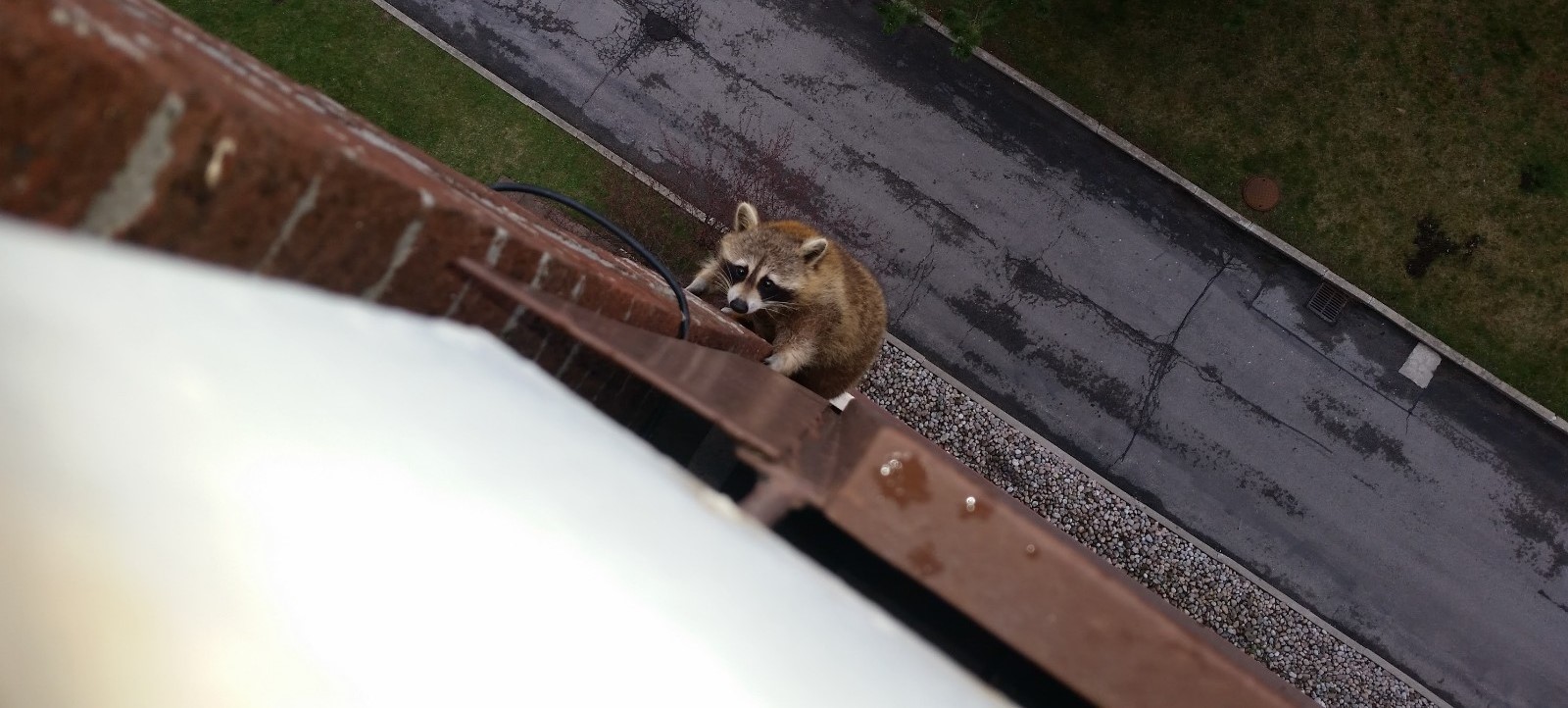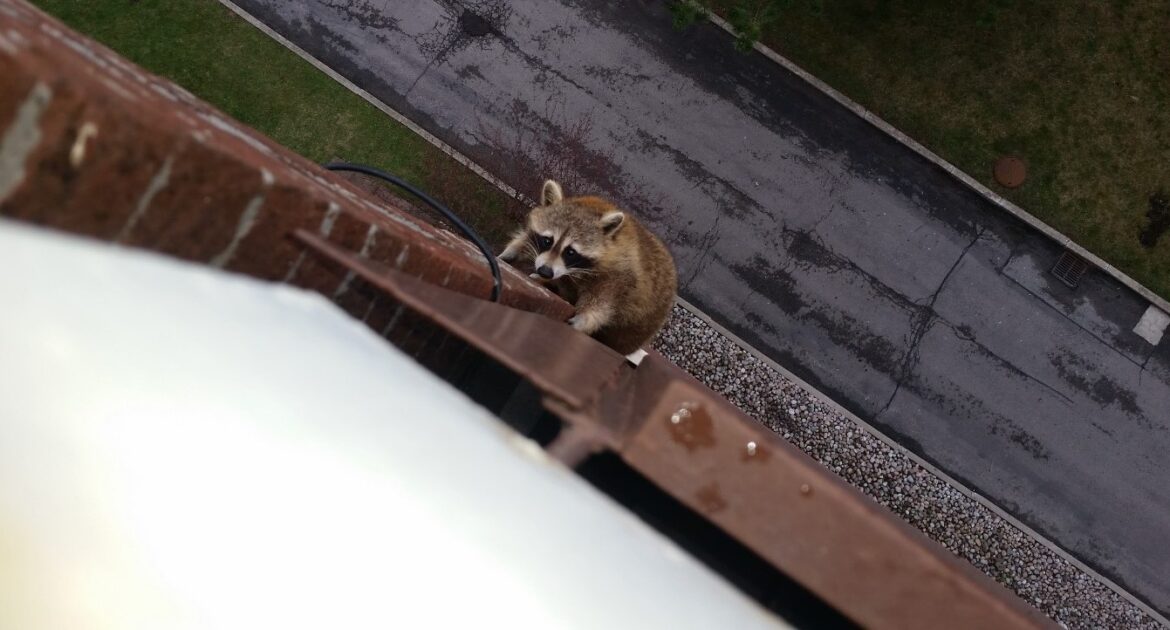If you’ve started noticing mysterious hand-like impressions showing up around your home, particularly near trash cans, gardens, or other food sources, you may be dealing with raccoons. These nocturnal animals are frequent visitors in urban areas like St. Paul, often leaving behind clear signs of raccoon activity. From footprints to overturned garbage bins, learning raccoon paw print identification is the first step to addressing the issue and taking steps to prevent raccoons from entering your property. Here’s what to look for and how to safeguard your home.
Raccoon Paw Prints Identification
One of the most obvious trademarks of raccoons is their distinctive paw prints. These can often be found on soft surfaces such as mud, snow, or even dusty areas around your home.
- What Do Raccoon Tracks Look Like?
Raccoon tracks resemble miniature versions of human handprints, measuring about 2–3 inches wide. You’ll notice five long fingers or toes on both the front and back paws. The rear tracks are larger, showing an elongated heel, while the front tracks appear a bit more compact.
- Where to Find Raccoon Tracks
Check soft ground near your yard, deserted gardens, or areas where food scraps may be present. Tracks are most prominent after rain or a light snowfall. Footprints near entry points like doorways or window sills can indicate attempted access to your home.
- Tracking Patterns
Raccoons move in an “alternating gait,” meaning their tracks appear closely paired with a front paw and the opposite rear paw side-by-side. The spacing between prints typically ranges from 10 to 18 inches, depending on their walking or running speed.
- Scat Identification
Raccoon droppings are another telltale sign of their presence and can often be found in areas they frequent, such as attics, decks, or along fences. Their droppings are typically tubular, about two to three inches long, and may contain visible remnants of berries, seeds, or other foods they consume. It’s critical to handle this evidence with caution, as raccoon feces can harbor harmful pathogens, including roundworm. Always use proper protective equipment and seek professional assistance when addressing potential contamination.
By learning how to identify these prints, you can confirm whether raccoons are the culprits frequenting your property.
Signs of Raccoons Near Your Home
Aside from paw prints, raccoons leave behind several other clues that they’ve been nearby. Recognizing these signs early can save you from dealing with long-term damage.
Sounds at Night
Raccoons are nocturnal and often active between dusk and dawn. If you hear noises like thumping, rustling, or vocal chirping during the night, especially from your attic or walls, raccoons could be attempting to make a den in your home.
Tipped-Over Trash Cans
If you wake up to find your garbage bins knocked over, their contents strewn across your yard, raccoons are likely to blame. Their strong paws and dexterity allow them to easily pry open bins in search of food.
Damaged Entry Points
Look out for tampered siding, broken vents, or shredded soffits near your roof. Raccoons can squeeze through openings as small as 4 inches and often enlarge entry points to gain access.
Droppings
Raccoon droppings are another telltale sign. Typically found near entrances they’ve used or feeding spots, these droppings can introduce harmful parasites like roundworms. Always use gloves and disinfect the area thoroughly if you spot feces.
Garden Disruption
Raccoons are notorious for scouring through gardens to feast on fruits, vegetables, or even insects in the soil. If you notice uprooted plants or chewed produce, you might have furry visitors.
By keeping an eye out for these indicators, you’ll be better equipped to take action before raccoons cause significant damage.
Prevent Raccoons From Entering
Once you’ve identified signs of raccoon presence, taking proactive measures to secure your property is essential.
- Secure Trash Bins
One of the most common attractions for raccoons is food waste. Use heavy-duty trash cans with secure, locking lids, or enclose your bins in a latched wooden or metal structure. Placing bricks or weights on top of lids can also deter them.
- Block Entry Points
Inspect your home for openings near the roofline, chimneys, vents, or baseboards. Seal gaps with heavy-gauge galvanized steel mesh, as raccoons can chew through softer materials like plastic or aluminum. Don’t forget to check your attic vents as well.
- Eliminate Food Sources
Remove any accessible food sources from your yard, such as pet food bowls or bird feeders. Secure compost bins with locking lids, and pick up fallen fruits from trees promptly.
- Trim Nearby Trees
Raccoons are excellent climbers and can use tree branches as a highway to your roof. Trim branches so they’re at least 4 feet away from your home to prevent access.
- Use Motion-Activated Deterrents
Install motion-sensitive lights or sprinklers in your yard. The sudden activation can startle raccoons and discourage them from returning.
- Apply Scent Deterrents
Raccoons dislike strong odors like ammonia or vinegar. Consider soaking rags in these substances and placing them near common entry points or areas they frequent.
These practical steps will help you reduce raccoon activity and protect your home effectively.
When to Contact Skedaddle for Raccoon Removal Services
Timing is crucial when it comes to addressing raccoon intrusions, and contacting Skedaddle at the right moment can help resolve the issue efficiently while minimizing risks. If you notice signs of raccoon activity around your property—such as overturned garbage, scratch marks, unusual noises in your attic or crawl spaces, or visible raccoon sightings—it’s essential to act promptly. Raccoons are highly adaptable and can cause significant damage within a short period, including structural issues and contamination from droppings.
- Contact Skedaddle for raccoon removal services as soon as you notice their presence.
- Early intervention prevents escalation, such as nesting or reproduction, which complicates removal.
- Spring and summer are peak seasons for raccoon breeding and birthing.
- If a mother raccoon nests in your home, humane removal is essential for the safety of both the animals and your household.
Additionally, contacting Skedaddle is recommended if you are unable to determine the raccoons’ points of entry or if DIY measures fail to deter them. Our experienced technicians will conduct a comprehensive assessment, identify entry points, and implement proven humane removal techniques tailored to your specific situation. By reaching out to Skedaddle promptly, you can safeguard your home effectively while ensuring the raccoons are handled responsibly. Your peace of mind is just a call away.
Call Skedaddle for Professional Assistance
If you’re dealing with persistent raccoon problems or suspect they’ve already entered your home, it’s time to call the professionals. At Skedaddle, we’ve spent years helping St. Paul homeowners deal with raccoon challenges humanely and effectively. From the Cathedral of Saint Paul to Summit Avenue, we understand the unique wildlife dynamics in our city.
Our comprehensive assessment will identify all raccoon entry points, and our team will secure your property using durable materials that can withstand raccoon tampering. With over 30 years of trusted wildlife control experience, our humane methods ensure both your safety and the raccoons’ well-being.
Don’t wait for damages to escalate. Spot the signs, act fast, and rely on us to help keep your home raccoon-free. Call Skedaddle today and take back control of your property!




